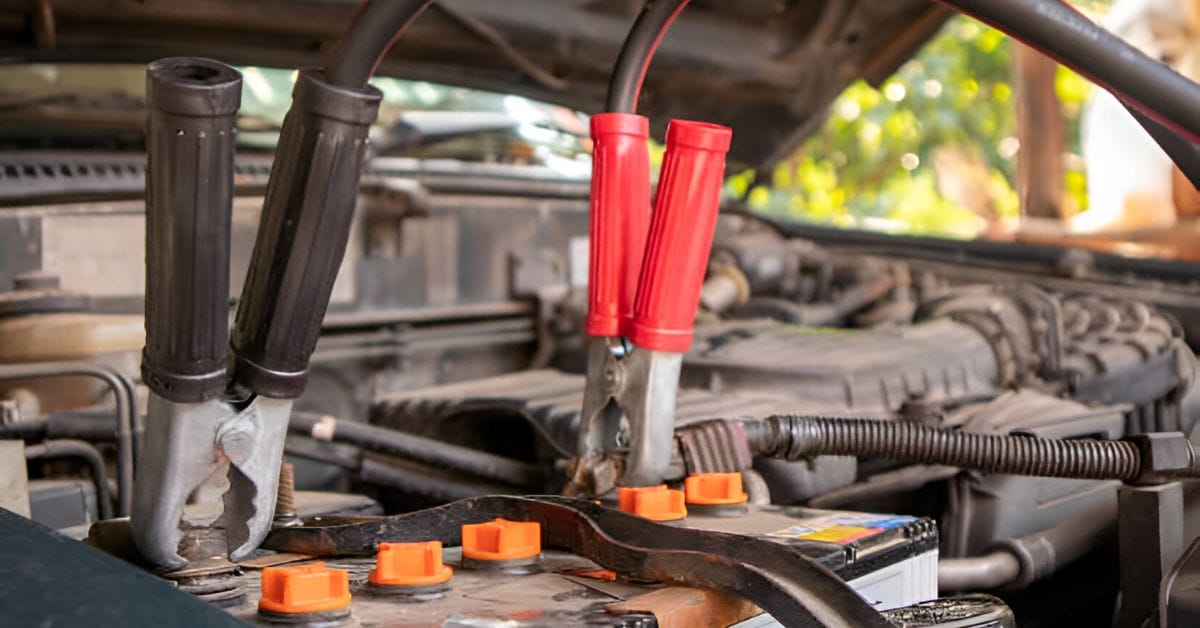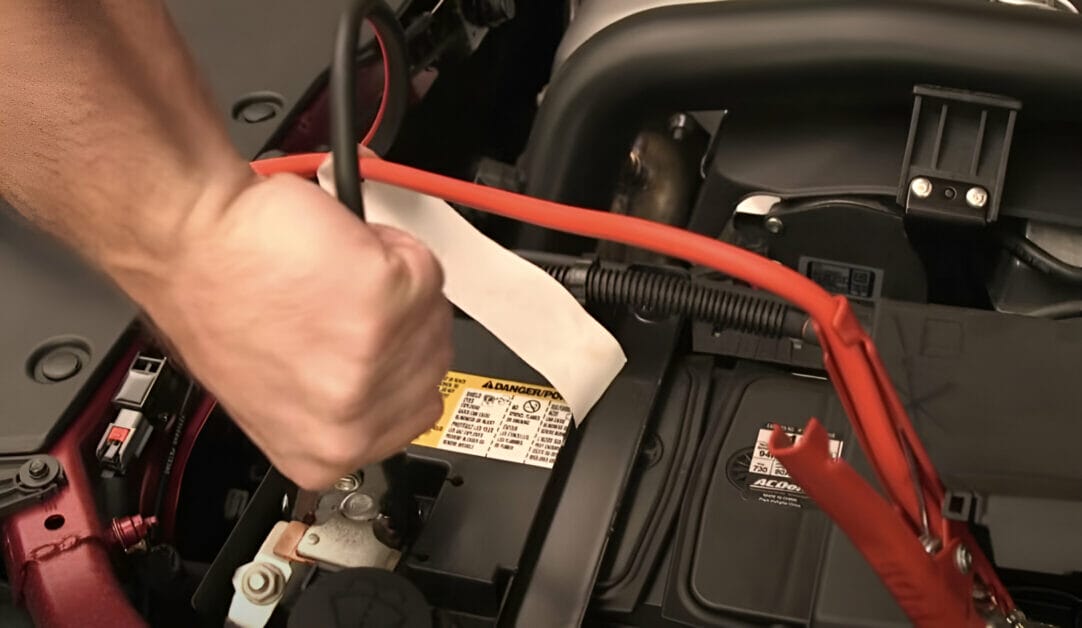How Long to Run a Car After a Dead Battery (Guide)

When you’ve got a dead battery and managed to jump-start your car, the next big question is: How long do you keep that engine running? Well, it’s not just a hit-and-run situation. You’ve got to give it some time to charge up.
Here’s the quick scoop: Keep it running for at least an hour, or go for a 30-minute drive to charge the battery. Want a full charge? Two hours idle or an hour on the road should do the trick!
This article will explore all the ins and outs of how long you should run your car after jump-starting that dead battery. So, buckle up, and let’s get into it!
The How-To on Battery Recharging After a Dead Battery
Alright, gear up for a quick dive into getting your car’s battery back to full strength after it’s hit rock bottom. It’s all about giving your car the necessary juice without overdoing it.

The Half-Hour Power Boost
So, you’ve jump-started your car – great first step! Now, let’s talk charging. I’ve found that a good 30-minute drive is usually just what the doctor ordered for your battery.
The Idle Strategy: A Longer Road
If you’re letting your car idle, it’s a longer game. We’re talking about a couple of hours to reach that sweet spot of 80% charge. An hour should do the trick if you’re in a pinch and need just enough to get moving.
Revving Up: Not Always a Bright Idea
I’ve heard folks say, “Just rev the engine while parked – it’ll charge faster!” Sure, it might seem like a shortcut, but it’s not the kindest thing for your engine.
My Take: Drive It to Charge It
From my experience, take your car out for a spin if you have the option. It’s more efficient and, honestly, a lot more fun than sitting parked. Plus, it’s a great excuse to enjoy the open road!
Factors Influencing Charging Time
Charging time isn’t a one-size-fits-all case. A handful of key factors influence it.
- Initial state of the battery. If your battery is stone-dead, it’ll take much longer to recharge than if it’s just feeling a little low on life. Make sense? So, the more depleted the battery, the longer it’ll take to recharge. Keep that one in mind.
- Overloading. Who hasn’t been guilty of trying to multitask? If you’re blasting the air con and headlight, playing your favorite tunes on the radio, and charging your phone simultaneously, your car battery will take a hit. Turning off these extras can significantly speed up the charging time.
- Temperature of the battery. If your battery gets too hot, it could be in danger of overheating, which is not something you want. So keep an eye on it, people!
- Sulfation. This is when lead sulfate crystals build up in your battery and may make it beyond repair. If you’re dealing with sulfation, no amount of charging will help, and it might just be time for a new battery.
Consider these factors when you’re nursing your car battery back to health. I’ll thank you for it.
Spotting the Signs of a Battery Calling It Quits
Over the years, I’ve seen my fair share of batteries go from heroes to zeroes, and here’s how I spot the warning signs.
- The Slow-Mo Start. Ever turn the key, and your car’s like, “Umm, give me a minute”? That’s your first clue. It might be a weary battery or a grumpy alternator. Pro tip: If it’s a manual, you might still have a shot with a good ol’ push-start.
- Dimming Down the Lights. If your headlights are more mood lighting than bright beacons, that’s sign number two. Flickering or dim lights? Your battery’s saying, “I’m running low here!”
- Gadget Grief. When your radio starts forgetting your favorite stations or your GPS acts like it’s lost in space, the battery sends an SOS. I once had a car where the windows would crawl up slower than a sloth – classic battery blues.
- The Worn-Out Cables and Connectors. Corroded connectors? Frayed cables? They’re eyesores. Keeping them clean and intact is like ensuring your battery has a clear path to show off its power.
- That Pungent Battery. Notice a smell that’s a bit off? It could be a battery leak, thanks to our not-so-friend sulfuric acid.
So, there you have it – the signs to watch for when your battery’s singing its swan song. Remember these, and you’ll be the Sherlock Holmes of car care.
Battery Maintenance: Your Roadmap to a Long-Lasting Battery
Let’s talk about keeping that crucial piece of your ride – the battery – in tip-top shape. I’ve learned a thing or two over the years, and I’m excited to share these nuggets of wisdom with you.
- Regular Check-Ups. First things first, let’s make regular check-ups a habit. I make it a point to pop the hood every few months to ensure everything looks clean and tight. Corrosion? Nope, not on my watch!
- Clean Connections. Corrosion on the terminals? That’s a big no-no. I’ve seen batteries act crazy due to some gunk build-up. My trick? Use a bit of baking soda and water, and scrub gently.
- Mind Your Lights. Have you ever left your lights on and come back to a car that won’t start? Been there, done that. It’s simple, but double-checking your lights and electronics are off when you park is a game-changer. Saves you from those “oh no” moments.
- Weather the Weather. Extreme temperatures are like kryptonite for batteries. In the scorching summers, I make sure my battery’s cool and hydrated (yep, check those fluid levels if it’s not a maintenance-free type). And in the winter chill, a cozy garage spot does wonders.
- Drive Time: Not Just a Short Spin. Short trips can be tough on your battery. It needs recharge, so I like mixing in some longer drives.
- The Right Fit: Size Matters. When it’s time for a new battery, getting the right size and type is key.
And there you have it! A little attention, regular check-ins, and a dash of care can keep your battery running strong for miles to come. Remember, it’s not just about the destination; it’s about enjoying a smooth journey. Safe travels!
Frequently Asked Questions
- Can I Jump-Start Any Car Regardless of Its Battery?
- Jump-starting is like giving your car a pep talk, but remember, some batteries (like AGM) need special attention. Always check your manual first – it’s your car’s life story!
- How Long Should I Drive After a Jump-Start?
- Hit the road for at least 30 minutes, folks! If you’re idling, give it an hour or two.
- Is It Safe to Jump-Start in the Rain?
- Are you jump-starting in the wet? Sure, but let’s keep it safe! Stay dry, avoid standing water, and wait out or call for help if unsure. Safety first, always!
- Can A Bad Battery Affect My Car’s Performance?
- You bet! A tired battery can make your car feel sluggish and might even throw some warning lights. Keep it in top shape for a smooth ride.
- What Should I Do If My Car Doesn’t Start After Jump-Starting?
- Didn’t it start? Let’s not panic! It might be more than the battery. Time to check the alternator or starter. Sometimes, it’s a deeper mystery.
References
Organizations:
- National Highway Traffic Safety Administration (NHTSA). https://www.nhtsa.gov/
- Battery Council International. https://batterycouncil.org/
Books:
- “The Car Care Book” by Ronald Haefner. https://www.abebooks.com/9781428342958/Care-Book-Haefner-Ronald-G-1428342958/plp
- “Complete Guide to Auto Repair” https://www.ebay.com/itm/233802020157
Website Resources:
- AAA’s Guide to Car Battery Care. https://www.aaa.com/autorepair/articles/battery-basics
- Edmunds Car Maintenance Section. https://www.edmunds.com/car-maintenance/guide-page.html
Video References:
ChrisFix
